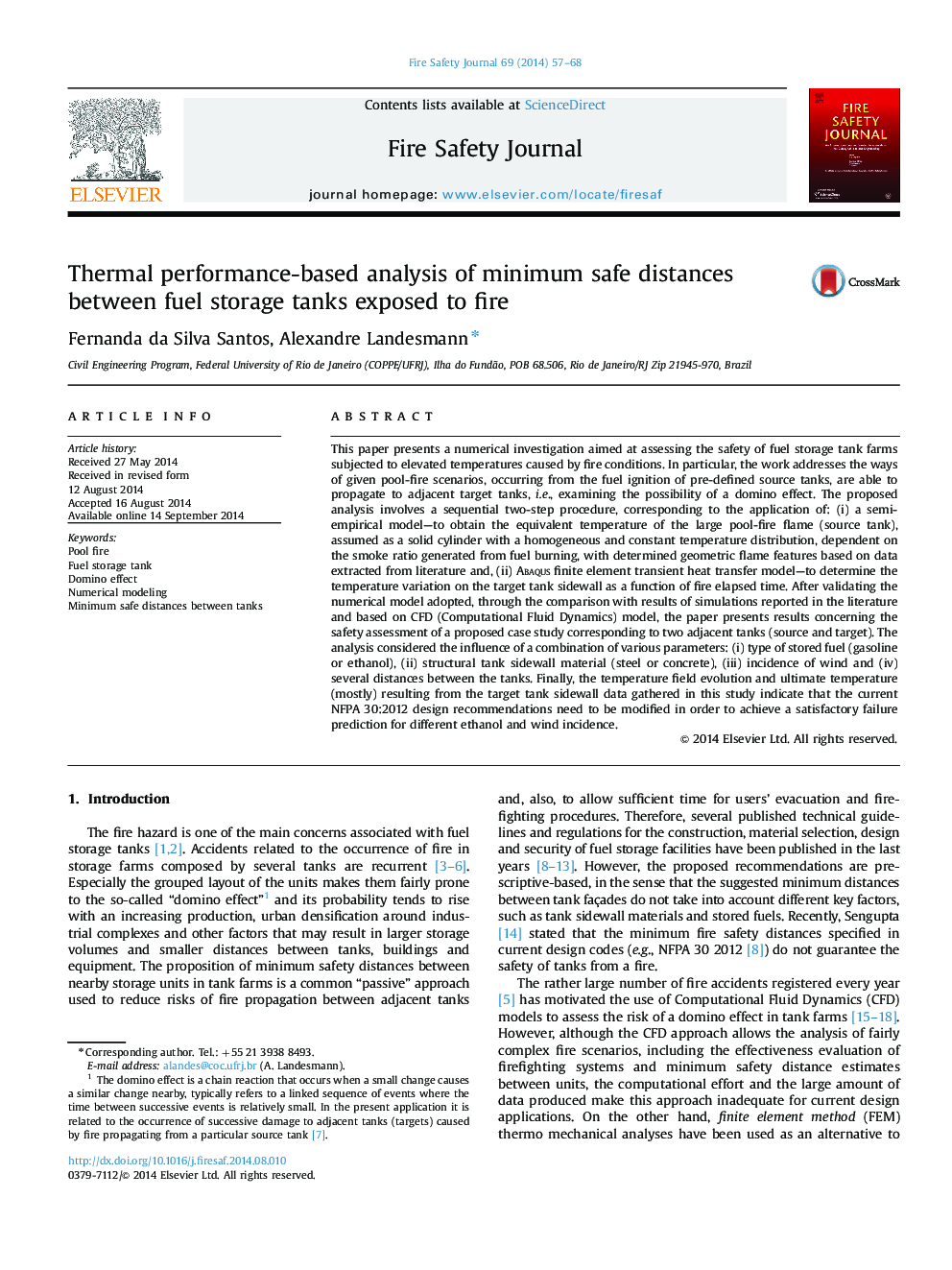| کد مقاله | کد نشریه | سال انتشار | مقاله انگلیسی | نسخه تمام متن |
|---|---|---|---|---|
| 269843 | 504708 | 2014 | 12 صفحه PDF | دانلود رایگان |
• Safety assessment of cylindrical steel and concrete storage tanks exposed to external fire.
• Coupling semi-empirical modified solid flame and thermal FEM models.
• Methodology provides reliable analyses ensuring ultimate failure of storage tanks exposed to fire on the temperature domain.
This paper presents a numerical investigation aimed at assessing the safety of fuel storage tank farms subjected to elevated temperatures caused by fire conditions. In particular, the work addresses the ways of given pool-fire scenarios, occurring from the fuel ignition of pre-defined source tanks, are able to propagate to adjacent target tanks, i.e., examining the possibility of a domino effect. The proposed analysis involves a sequential two-step procedure, corresponding to the application of: (i) a semi-empirical model—to obtain the equivalent temperature of the large pool-fire flame (source tank), assumed as a solid cylinder with a homogeneous and constant temperature distribution, dependent on the smoke ratio generated from fuel burning, with determined geometric flame features based on data extracted from literature and, (ii) Abaqus finite element transient heat transfer model—to determine the temperature variation on the target tank sidewall as a function of fire elapsed time. After validating the numerical model adopted, through the comparison with results of simulations reported in the literature and based on CFD (Computational Fluid Dynamics) model, the paper presents results concerning the safety assessment of a proposed case study corresponding to two adjacent tanks (source and target). The analysis considered the influence of a combination of various parameters: (i) type of stored fuel (gasoline or ethanol), (ii) structural tank sidewall material (steel or concrete), (iii) incidence of wind and (iv) several distances between the tanks. Finally, the temperature field evolution and ultimate temperature (mostly) resulting from the target tank sidewall data gathered in this study indicate that the current NFPA 30:2012 design recommendations need to be modified in order to achieve a satisfactory failure prediction for different ethanol and wind incidence.
Journal: Fire Safety Journal - Volume 69, October 2014, Pages 57–68
